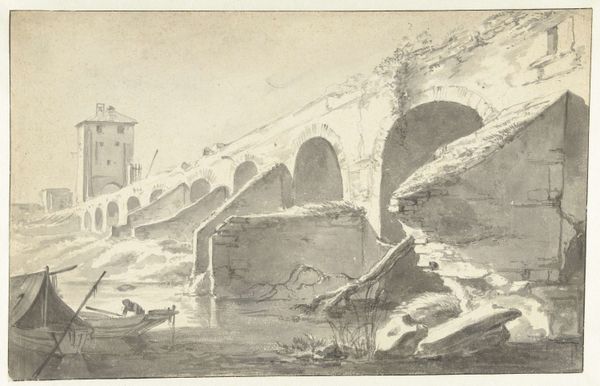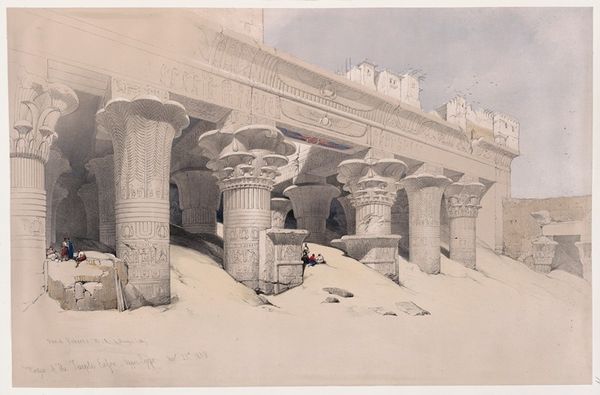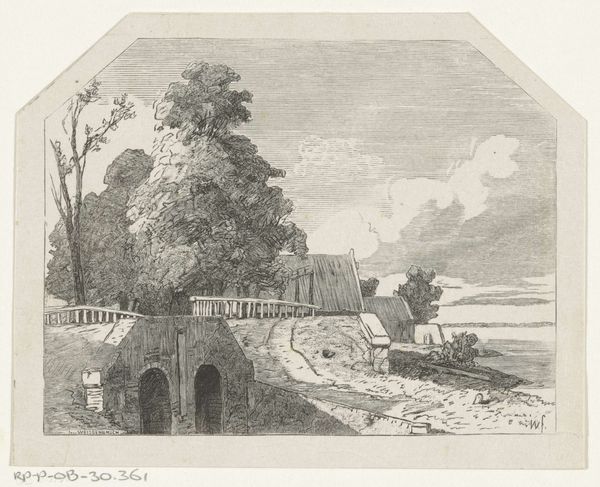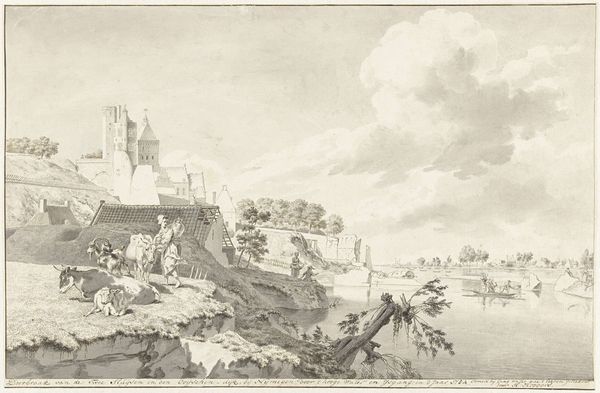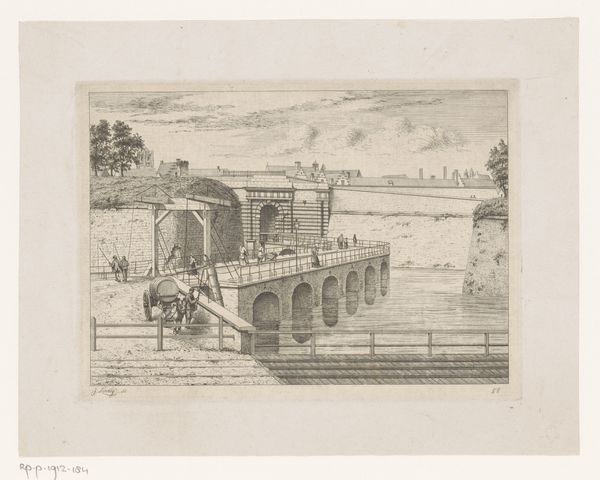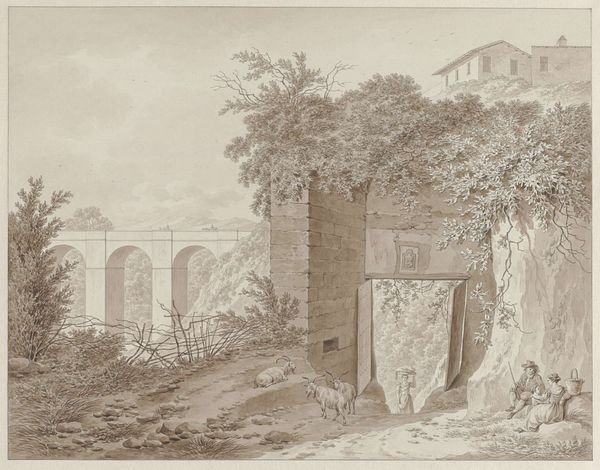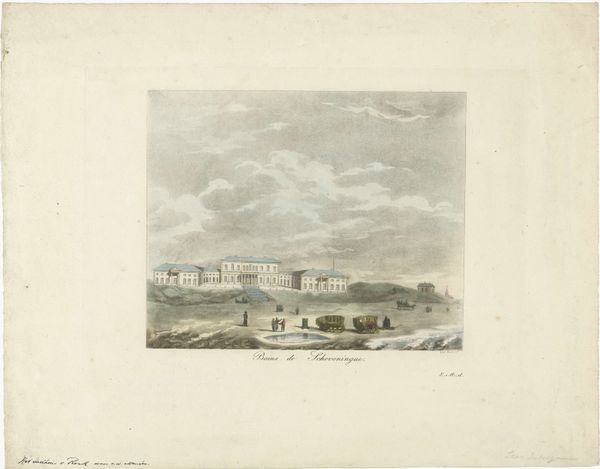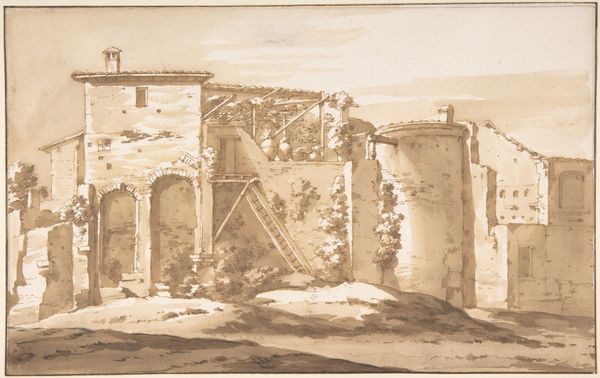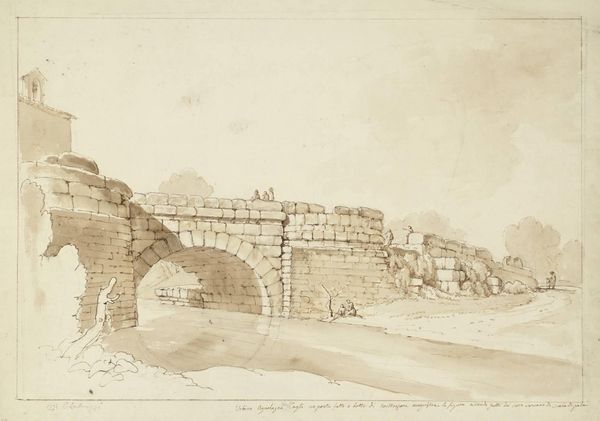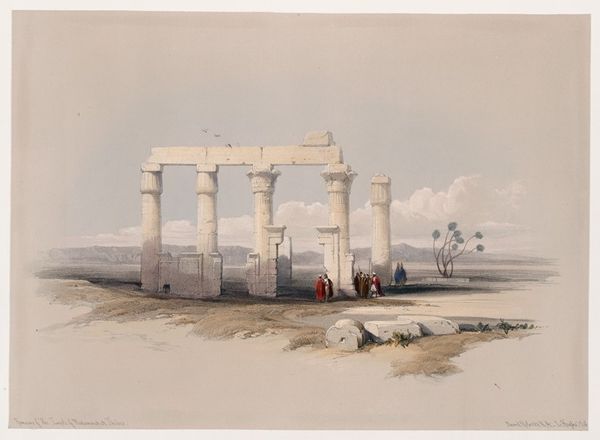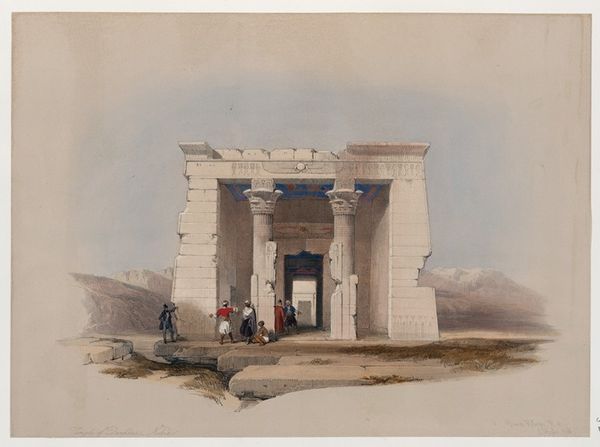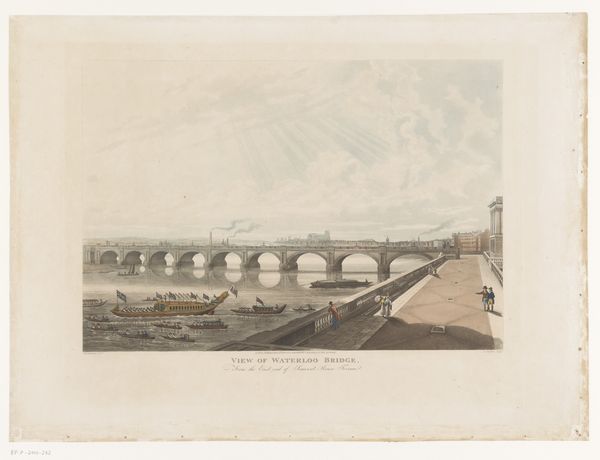![Lateral view of the temple called the Typhonæum, at Dendera [Dandara]. by David Roberts](/_next/image?url=https%3A%2F%2Fd2w8kbdekdi1gv.cloudfront.net%2FeyJidWNrZXQiOiAiYXJ0ZXJhLWltYWdlcy1idWNrZXQiLCAia2V5IjogImFydHdvcmtzL2VmMzliMjA4LTljNGEtNGZjMS1iNjMyLTMwN2NmZWQ0MDI1Ni9lZjM5YjIwOC05YzRhLTRmYzEtYjYzMi0zMDdjZmVkNDAyNTZfZnVsbC5qcGciLCAiZWRpdHMiOiB7InJlc2l6ZSI6IHsid2lkdGgiOiAxOTIwLCAiaGVpZ2h0IjogMTkyMCwgImZpdCI6ICJpbnNpZGUifX19&w=1920&q=75)
Lateral view of the temple called the Typhonæum, at Dendera [Dandara]. 1846 - 1849
0:00
0:00
painting, watercolor, architecture
#
painting
#
landscape
#
classical-realism
#
ancient-egyptian-art
#
watercolor
#
ancient-mediterranean
#
watercolour illustration
#
history-painting
#
architecture
Copyright: Public Domain: Artvee
Curator: This watercolor, rendered between 1846 and 1849 by David Roberts, offers a lateral view of the Temple of Dendera, once referred to as the Typhon\u00e6um. Editor: It's evocative, isn't it? There's a real sense of stillness, almost melancholic. The pale washes create a delicate contrast with the monumentality of the architecture, like a ruin fading into memory. Curator: Roberts was part of a broader 19th-century phenomenon, where artists documented ancient sites in the Middle East, contributing to a growing fascination with Egypt within European society. These images also aided the project of archaeological reconstruction back home, fueling popular exhibitions and influencing design. Editor: Indeed, but who was this art made for, exactly? It's hard to look at these kinds of paintings now without thinking about the power dynamics at play. Here we have an artist from Britain, then the world’s dominant superpower, capturing Egyptian antiquity for a European audience already predisposed to viewing non-Western cultures as something to be studied and possessed. The three figures are almost faceless in a society viewed under the colonizers lens. Curator: That’s a valid critique. And we can look at the composition. Notice how the artist frames the temple, emphasizing its scale, presenting it almost as a landscape feature. The human presence is downplayed. Consider the act of documenting and portraying a site as an endeavor shaped by prevailing beliefs and systems of thought. It raises critical issues regarding the ethics of representation. Editor: The lack of vibrant colors also strikes me. Was it intended to emphasize a kind of timelessness, or to suggest the faded glory of a lost civilization to the western public? Or maybe it points to a certain romanticism that romanticizes decay? It's subtle propaganda about western cultural heritage and eastern civilization. Curator: Roberts, however, meticulously transcribed architectural details. The columns with their ornate capitals, the hieroglyphs—evidence of an attempt at scholarly accuracy for the artist, regardless of how the images are ultimately viewed. It's also essential to see works such as this in the historical moment from which they arise. Editor: Agreed, by contextualizing it as a product of its time, we gain a richer and ultimately more complicated comprehension. Still, these views are also about whose voices were excluded in these works from western perspective and power. Curator: Thank you for helping our visitors look deeper, consider that context, and ask such pertinent questions. Editor: My pleasure. I think considering all that contributes to a more thoughtful and more critical appreciation.
Comments
No comments
Be the first to comment and join the conversation on the ultimate creative platform.
